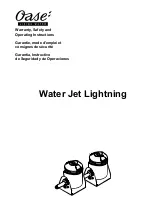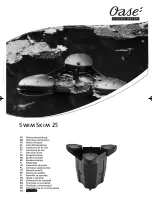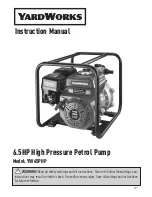
1
2
3
4
Fig. 6:
Vacuum connection with flange connection
1 Protective cap
3
Centering ring with cone sieve and O-ring
2 Intake line
4
Circlip
Procedure
1. Remove the protective cap from the vacuum flange.
2. Make sure that the centering ring with cone sieve and the O-ring are in the vacuum flange.
3. Establish the shortest possible connection between vacuum pump and vacuum chamber.
4. Choose a minimum vacuum line cross section equal to the nominal diameter of the connection
flange.
5. Depending on the pump type, use PVC or metallic hoses with flange connections from the
6. Support or suspend the piping to the vacuum pump so that no piping system forces act on the
vacuum pump.
7. Connect both flanges with a circlip.
8. Use a separator or filter from the Pfeiffer Vacuum line of
5.3 Connecting the exhaust side
CAUTION
Danger of injury from bursting as a result of high pressure in the exhaust line
Faulty or inadequate exhaust pipes lead to dangerous situations, e.g., increased exhaust pressure.
There is a danger of bursting. Injuries caused by flying fragments, the escaping of high pressure, and
damage to the unit cannot be excluded.
► Open shut-off units immediately before or at the same time as starting the pump.
► Observe the maximum permissible pressure of 1,500 hPa (absolute).
► Observe the permissible pressures and pressure differentials for the product.
► Check the function of the exhaust line on a regular basis.
NOTICE
Malfunction and damage to the vacuum pump from inadmissible exhaust line installation
Negative pressure in the exhaust line causes malfunctions and damage to the vacuum pump. Nega-
tive pressure is permitted only in rotary vane vacuum pumps with magnetic coupling.
► When dissipating gases, make sure that the exhaust pressure is at least 250 hPa higher than the
intake pressure.
Condensate separator
Pfeiffer Vacuum recommends installing a condensate separator, with condensate drain at
the lowest point of the exhaust line.
Installation
24/62
















































